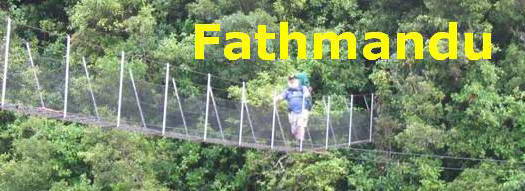
Many thanks for permission to use graphics from their software and toposheets |
 |
|
(page 2)You Take the High RoadThe Okura Walkway, part 3Stillwater to Dacre Cottage and returnWe continue around the point
and check out the sedimentary strata in the cliffs
The action of tides on the hard and soft horizontal layers has generated some interesting forms.
and the driftwood will always repay closer attention.
Alice is perfecting the waif look
The wind is freshening a little but we're walking hard enough to stay warm
Up ahead is the cottage, but you've already had a look around there so we'll hang a right and continue up the hill and back to the car.
Somewhere in some notes I read there is mention of a stiffish climb. This, I presume is it.
We could go on for a bit but you'd just get bored.
The beach is now some way off as the crow falls. Fortunately there is plenty of interesting stuff that isn't several miles below to look at while I pause for breath. There's a young kohekohe, (Disoxylum spectabile) not all that common out this way compared with, say, Woodhill, with a small kawakawa, (Macropiper excelsa) at it's base, again, remarkably free of the lacework that characterises this plant elsdewhere when it is a major food source. In amongst the kawakawa can be seen the paired leaves of hangehange, (Geniostoma ligustrifoilium)
As we saw in the Cascades, each step seems to invite it's own small population. Here are a couple of tiny putaputaweta (Carpodetus serratus)
Nikau (Rhopalostylis sapida) feature strongly in this section of the track
and there moments when a patch of sun combines with a lichen encrusted stem to produce something special.
As we near the top, the bush becomes more open.
and a huge kowhai overhead litters the ground with fallen petals
Here and there koromiko can be found at the edge of the track. These normally inhabit lighter areas on the fringe of the bush. Miranda uses her macro setting to good effect.
Always worth repeating, if you haven't seen it elsewhere on my site. The leaves at the end of the stem are a wonderful cure for diarrhoea. All the leaves actually, but at the growing tip of the stem, the new leaves are completely enclosed and about as hygienic as you are going to get. During the war, when medical supplies were short, the NZ government shipped quantities of the dried leaves to our troops in North Africa. I use about 4 of these small tips when I need to. Very effective indeed, especially when the living is outdoors and the weather is warm and hygiene sometimes slips a little.
|
|